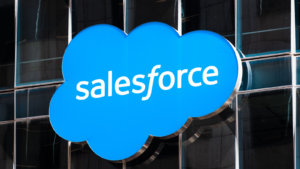2023 has been a surprisingly bad year for individual stocks. Sixty percent of all companies in the Russell 3000 index saw their share prices go down this year; an equal-weighted portfolio would have fallen 3% this year.
That stands in stark contrast to the Nasdaq Composite and other indices that weigh their constituents by market capitalization (i.e., those that put more money into larger firms). The Nasdaq gained as much as 40% this year, while the S&P 500 was 20% higher by July.
These head-spinning gains were generated by a handful of mega-cap stocks that investors now call the “Magnificent 7.” These seven stocks represent some of the best bets in artificial intelligence, cloud computing, and other technologies.
Meanwhile, AI is helping revive the fortunes of other well-run businesses. And so, as we look into 2024, other top-tier stocks will likely join their ranks.
And the writers at InvestorPlace.com – our free news and analysis site – have been busy selecting the top stocks they believe will join the “Magnificent 7” in becoming the next top-tier AI leaders.
5 Top-Tier AI Stocks for Dependable Returns: Palantir (PLTR)

InvestorPlace.com writer Chris MacDonald has long been a skeptic of Palantir Technologies (NYSE:PLTR), a tech-focused company that cared little about its sales team or finances. In 2022, the company spent $702 million on sales and marketing, only to see revenues rise by $364 million. For years, management adopted the “build it and they will come” mentality without much regard for its bottom line.
However, the demand for AI solutions is beginning to change the picture. MacDonald notes that Palantir is finally winning some key government contracts, which has helped the firm become profitable over the past three quarters. Here’s from his recent update, where the bearish investor takes a second look at the promising AI firm:
Now, I’ve focused on the fact that this profitability has been minimal. And that is the case. But given Palantir’s strength as a deal-maker with key government agencies and commercial partners, perhaps this earnings growth could accelerate from here. …
Additionally, Palantir Technologies also secured a $250 million contract with the U.S. Defense Department for AI and machine learning research. The three-year deal strengthens its ties with the U.S. government and its role in AI and defense. This contributed to a 6% rise in Palantir’s shares in September. The contract builds on their prior work with the Army Research Lab, focusing on AI research and development.
In short, artificial intelligence has become so useful that government agencies need to seek out firms like Palantir. Analysts now believe the data analysis firm will generate 16% topline growth this year, even as it cuts selling and marketing expenses by 13%. Though Palantir still hasn’t overhauled its sales team yet, that matters far less when customers are breaking down your front door to get a piece of the AI pie.
Salesforce (CRM)

This week, InvestorPlace.com writer Faisal Humayun highlights the large upside at Salesforce (NYSE:CRM). According to company estimates, Salesforce’s market could be worth $290 billion by 2026, which Humayun believes can turn the company into the next trillion-dollar giant:
I believe this potential trillion-dollar stock’s positive momentum will likely be sustained. In the next five years, CRM stock seems poised for five-bagger returns…
It’s also worth noting that Salesforce has been pursuing aggressive international expansion. As of FY 2023, the company derived 37% of its revenue from international markets. Geographic expansion is another growth catalyst.
The rise of AI-focused sales tools is an essential part of that picture. Products like Salesforce’s generative AI – called Einstein – can write entire emails to potential clients. It also gathers data, automates workflows, and creates recommendations of what sales and marketing teams should do next. (Perhaps Palantir should buy a copy?)
This isn’t some gimmick. And it’s certainly not about using ChatGPT to do a salesperson’s homework. Instead, these Einstein tools are like moving from pen and paper to word processing. Or from individual phone calls to mass outbound emails. It’s a step change in productivity that will quite literally overhaul how sales teams work. I know this sounds hyperbolic, but it’s true.
As generative AI grows more powerful, customers will find Salesforce’s products ever more valuable. Because if they don’t use Einstein, their competitors surely will.
PayPal (PYPL)

I’ve written about PayPal (NASDAQ:PYPL) several times in InvestorPlace Digest now. The company’s cheap valuation (10X forward earnings), wide economic moat, and ability to grow sales with minimal investment makes its $50 shares “bordering on ridiculous.”
This week Yiannis Zourmpanos, at InvestorPlace.com, highlights another reason to buy: PayPal’s new CEO.
The company’s incoming CEO, Alex Chriss, is a veteran of Intuit (NASDAQ:INTU), another leader in AI-driven tech. In September, Intuit launched a generative AI-powered assistant, and the company, most famous for its tax preparation software, has plans to eventually launch an AI that doubles as an outsourced chief financial officer (CFO) for small businesses.
PayPal’s selection of Chriss highlights its own AI-driven ambitions. Fraud is a growing problem in online commerce, and PayPal’s unusual business model gives it access to data from both sides of a transaction. (Credit card companies, banks, and legacy payment processors will only see one end.)
That gives PayPal a trove of data for its AI systems to analyze.
Though Louis Navellier and the InvestorPlace.com staff remain on the sidelines for now, investors who don’t mind buying the dip and waiting for a recovery will likely be rewarded with double-digit gains in this financial AI leader.
Synopsys (SNPS) and Cadence (CDNS)

Finally, Luke Lango highlights two new picks this week in Hypergrowth Investing that he believes are poised to win big in the custom AI chip boom:
Synopsys is the undisputed leader in the EDA software market with what we estimate to be about 40% market share. Cadence is right behind them with about 30% market share. They are the two titans of the EDA software market.
It’s an extremely intriguing call. Synopsys (NASDAQ:SNPS) and Cadence Design Systems (NASDAQ:CDNS) are leaders in the electronic design automation (EDA) software market, which is a fancy way of saying “chip design.” They also provide the software integrity tools that help write secure, high-quality code. It’s a business with incredible growth potential thanks to the increasing sophistication of semiconductors… particularly around AI, which requires advanced chips.
Barriers are high in the industry. Today, the EDA market is dominated by Synopsys, Cadence and Mentor (a Siemens subsidiary). And only Synopsys and Cadence offer full-flow automation in the chip design process.
Specialization by the former two firms further increases these barriers. Synopsys is dominant in register-transfer level (RTL) simulation, which is used in the logic design phase. (These are the AND/OR gates that underlie the very existence of digital chips.) Synopsys also offers software integrity (SI) services, which allow developers to test code in real-time as it is being written. That’s helped the firm become a “runaway leader” in the application security testing space, according to Gartner.
Meanwhile, Cadence has its own set of benefits. The company began as a designer of analog chips, which are more complex and “archaic” than digital versions, as analysts at Morningstar put it. The firm now has an 80% market share in that segment. Cadence also has a more conservative management approach that focuses on profitability instead of growth. They generate margins that are 31% higher than Synopsys, despite being smaller.
In either case, both Synopsys and Cadence look set to succeed. Most customers adopt a mix-and-match model among EDA software providers, which helps reduce reliance on a single vendor. That makes it unlikely for either Cadence or Synopsys to disappear the way AMD did in graphics cards.
The rise of AI applications also is turbocharging demand for these two firms; Complex chips require far more EDA solutions to produce. Vertical-stacked chips, known as GAAFET (gate-all-around field-effect transistor), is the next frontier in this race.
As the AI Revolution continues to unfold, investors can expect these two top-tier firms to keep succeeding.
One Bonus Pick: Nokia

Nokia (NYSE:NOK) isn’t exactly a top-tier AI company. The firm has lost market share to Ericsson (NASDAQ:ERIC) in recent years, and even an American blockade of Chinese rival Huawei hasn’t been able to revive the firm’s fortunes. Nokia has now lost 94% of its peak market capitalization and focuses on a narrow segment of network infrastructure.
Still, even second-tier companies without an AI strategy can benefit from the rise of artificial intelligence.
In Nokia’s case, the Finnish telecom company is sitting at the start of an enormous 5G buildout. Ultrafast networks will be essential for AI applications, because technologies like self-driving cars require near-instantaneous communications to work. Cars that “talk” to each other to avoid collisions must do so in real time.
That means Nokia could see demand surge as telecom providers ramp up investment. As Faizan Farooque notes in this week at InvestorPlace.com:
Some might group Nokia with penny stocks, considering it one of the potential multi-bagger penny stocks. Yet, its potential to stand out as a lucrative penny stock is clear. The company isn’t merely relying on its past achievements. Instead, it focuses on continuous innovation, forms strategic partnerships, and envisions the future of communication.
The company’s $3 shares could be worth as much as $6 from a fundamental standpoint. In a sense, Nokia represents what “cigar butt” investments have turned into for the 21st century.
But…
Achieving 2X returns from AI-related picks doesn’t have to involve betting on risky “cigar butt” turnarounds. That’s why, on Wednesday, November 1 at 8 p.m. Eastern, Luke Lango is going public with the BIGGEST AI story of 2023.
He tells me it’s bigger than ChatGPT, Elon Musk’s secretive X.AI project, and even Nvidia. And on Wednesday night, he’s going to show how, if played correctly, we could see 100-times profit potential.
He believes this could be Elon’s AI Endgame. Secure your spot now for Luke’s 100X AI Blueprint event.
As of this writing, Tom Yeung did not hold (either directly or indirectly) any positions in the securities mentioned in this article. The opinions expressed in this article are those of the writer, subject to the InvestorPlace.com Publishing Guidelines.
Tom Yeung is a market analyst and portfolio manager of the Omnia Portfolio, the highest-tier subscription at InvestorPlace. He is the former editor of Tom Yeung’s Profit & Protection, a free e-letter about investing to profit in good times and protecting gains during the bad.
